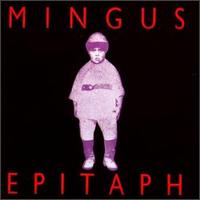A quintet is a group containing five members. It is commonly associated with musical groups, such as a string quintet, or a group of five singers, but can be applied to any situation where five similar or related objects are considered a single unit.

Mingus Mingus Mingus Mingus Mingus is a studio album by the American jazz composer and bassist Charles Mingus which was released on January 9, 1964.
English Folk Song Suite is one of English composer Ralph Vaughan Williams' most famous works. It was first published for the military band as Folk Song Suite and its premiere was given at Kneller Hall on 4 July 1923, conducted by Lt Hector Adkins. The piece was then arranged for full orchestra in 1924 by Vaughan Williams' student Gordon Jacob and published as English Folk Song Suite. The piece was later arranged for British-style brass band in 1956 by Frank Wright and published as English Folk Songs Suite. All three versions were published by Boosey & Hawkes; note the use of three different titles for the three different versions. The suite uses the melodies of nine English folk songs, six of which were drawn from the collection made by Vaughan Williams' friend and colleague Cecil Sharp.
Walter Sinclair Hartley was an American composer of contemporary classical music.

Wazoo is a live album by Frank Zappa, posthumously released in October 2007 as a 2-CD set consisting of the complete concert given by "The Mothers of Invention/Hot Rats/Grand Wazoo" 20-piece big band on September 24, 1972 at the Music Hall, Boston, Massachusetts, United States. It is the third installment on the Vaulternative Records label that is dedicated to the posthumous release of complete Zappa concerts, following the releases of FZ:OZ (2002) and Buffalo (2007).
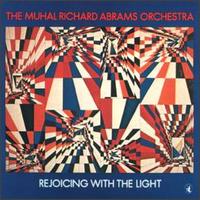
Rejoicing with the Light is an album by Muhal Richard Abrams. It was released on the Italian Black Saint label in 1983 and features performances of five of Abrams' compositions by a fourteen-member orchestra.

Cumbia & Jazz Fusion is an album by Charles Mingus, recorded for the Atlantic label in 1977. It features two extended compositions written for the film Todo Modo by Mingus and performed by large ensembles featuring Jack Walrath, Jimmy Knepper, Paul Jeffrey, Ricky Ford, Dannie Richmond, Candido, Ray Mantilla, George Adams and Danny Mixon. The CD reissue added two solo performances by Mingus on piano.

Concert in the Garden is the fourth studio album by American jazz composer Maria Schneider. The album was released in 2004 by ArtistShare and won the Grammy Award for Best Large Jazz Ensemble Album in 2005.
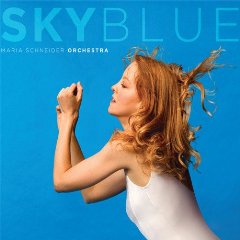
Sky Blue is the fifth studio album by American jazz composer Maria Schneider. The album was released in 2007 through ArtistShare and was nominated for two 2008 Grammy Awards for Best Large Jazz Ensemble and Best Instrumental Composition.

Super Hits is a greatest hits album from Miles Davis. Released in 2001, it reached #22 on Billboard's Jazz Albums chart.

Streams of Expression is the 20th studio album by American jazz musician Joe Lovano to be released on the Blue Note label. It was released in 2006 and features a five-part "Streams of Expression Suite," three-part "Birth of the Cool Suite," and three other shorter works. The "Birth of the Cool Suite" was conducted by Gunther Schuller and utilizes melodic themes inspired by Miles Davis' work from his 1948 and 1950 nonet. The album also features George Garzone, Ralph Lalama, Gary Smulyan, and Tim Hagans.

Mingus at Monterey is a live album by the jazz bassist and composer Charles Mingus, recorded in 1964 at the Monterey Jazz Festival and originally released on Mingus's short-lived mail-order Jazz Workshop label but subsequently released on other labels.

Charles Mingus and Friends in Concert is a live album by the jazz bassist and composer Charles Mingus, recorded at the Philharmonic Hall of the Lincoln Center for the Performing Arts in 1972 and released on the Columbia label. The CD release added five previously unreleased performances from the concert, but did not include the opening track, Fats Waller's "Honeysuckle Rose", present in the LP version and on former Japanese CD editions.

Rush Hour is an album by the American jazz saxophonist Joe Lovano, featuring an orchestra arranged and conducted by Gunther Schuller, recorded in 1994 and released on the Blue Note label.
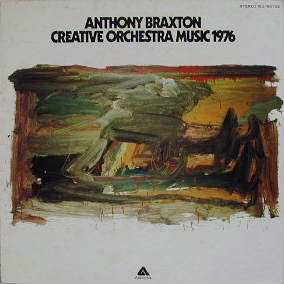
Creative Orchestra Music 1976 is an album by American jazz saxophonist and composer Anthony Braxton recorded in 1976 and released on the Arista label. The album was subsequently included on The Complete Arista Recordings of Anthony Braxton released by Mosaic Records in 2008.
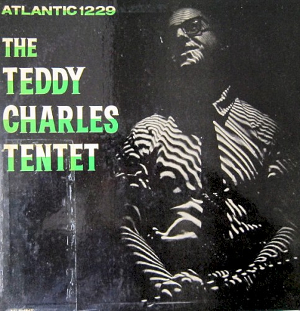
The Teddy Charles Tentet is a 1956 jazz album featuring a tentet led by multi-instrumentalist Teddy Charles. Critically well received, the album is listed as one of the "Core Collection" albums in The Penguin Guide to Jazz and an essential recording in 2000's The Essential Jazz Records: Modernism to Postmodernism. Released originally in high fidelity vinyl by Atlantic, the album has been reissued on CD and LP multiple times since 2001.

The Complete Town Hall Concert is a live album by the American jazz musician Charles Mingus released on Blue Note label 1994. It was recorded at the Town Hall in New York City in 1962. Some tracks were previously released on the United Artists label in 1962 as Town Hall Concert.

Live at Jazz Standard is an album by the Mingus Big Band that won the Grammy Award for Best Large Jazz Ensemble Album in 2011. The album documents a concert at the Jazz Standard club in New York City on New Year's Eve, 2009. The concert and the album commemorate the fiftieth anniversary of songs recorded by Charles Mingus. The band was conducted by Gunther Schuller and included trumpeter Randy Brecker, who played with Mingus during the 1970s.

The Blues Roar is an album released by Canadian jazz trumpeter Maynard Ferguson featuring tracks recorded in 1964 and originally released on the Mainstream label.

Stan Kenton Conducts the Los Angeles Neophonic Orchestra is an album by bandleader Stan Kenton recorded in 1965 by Capitol Records.
